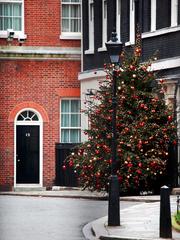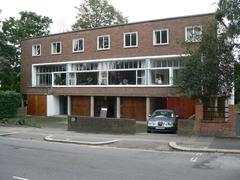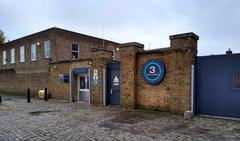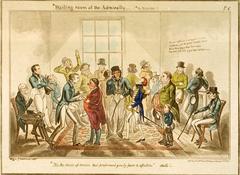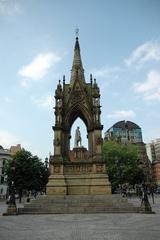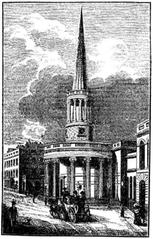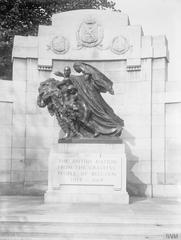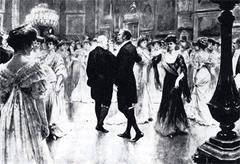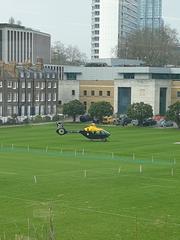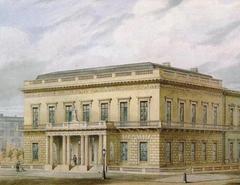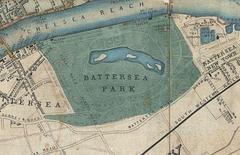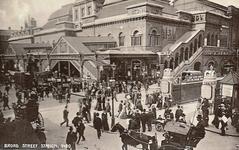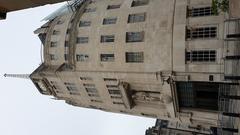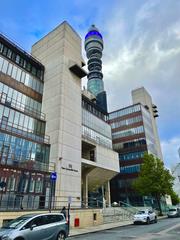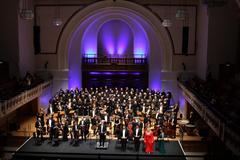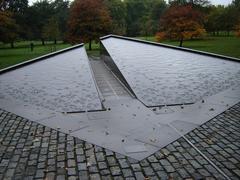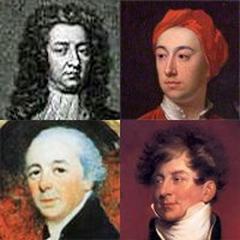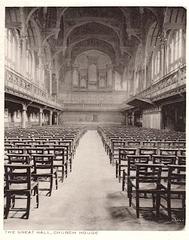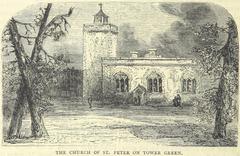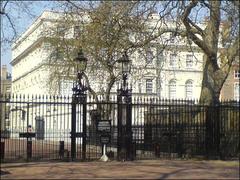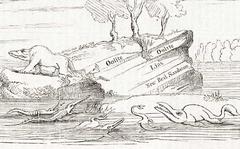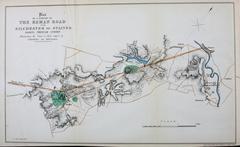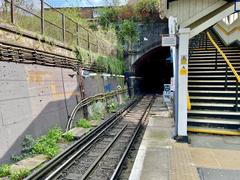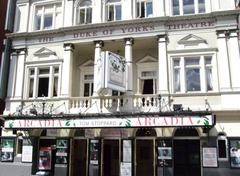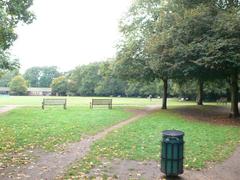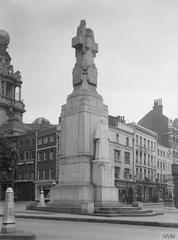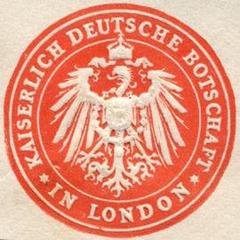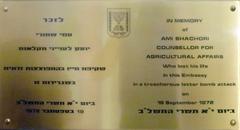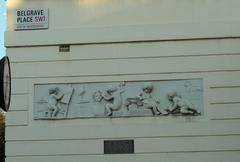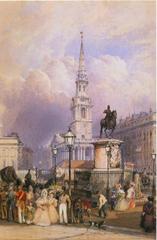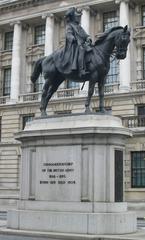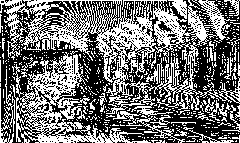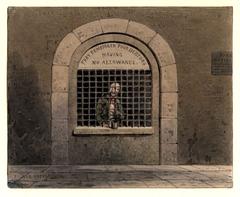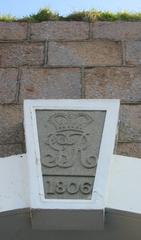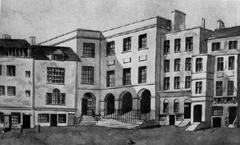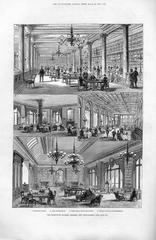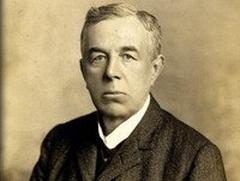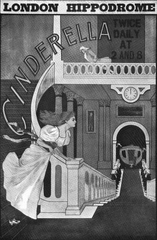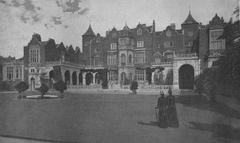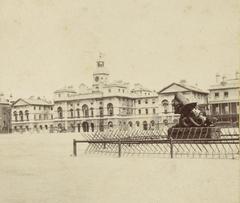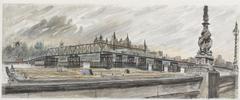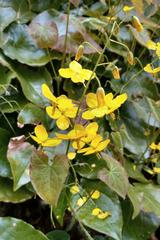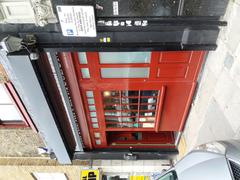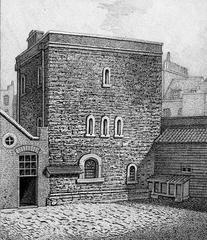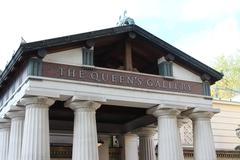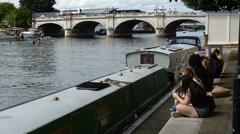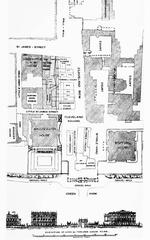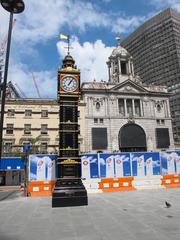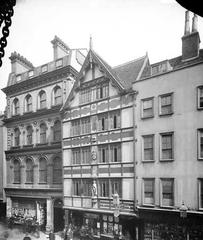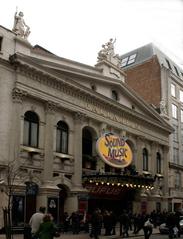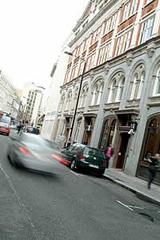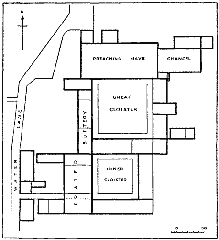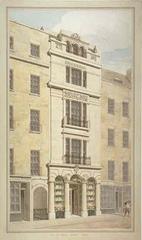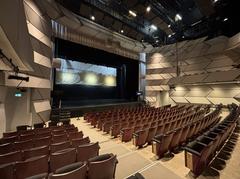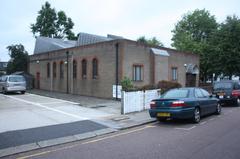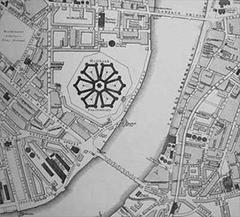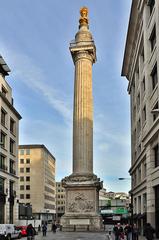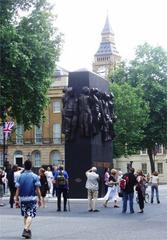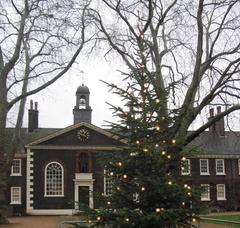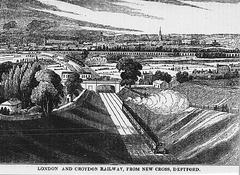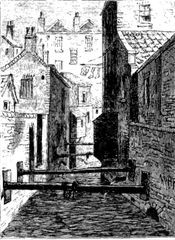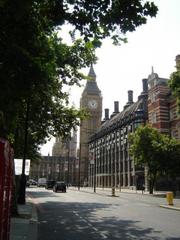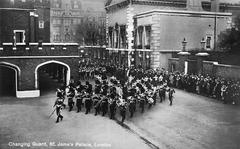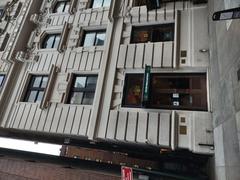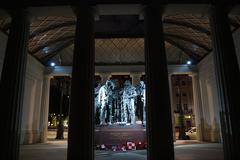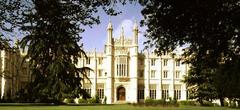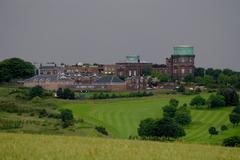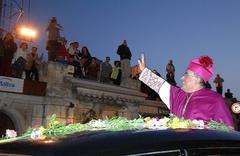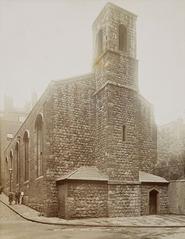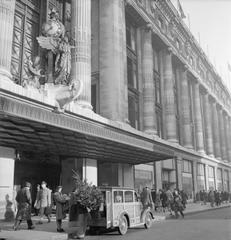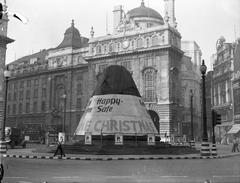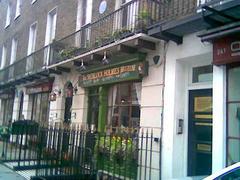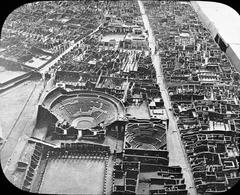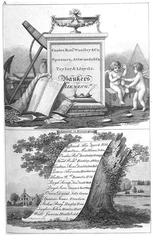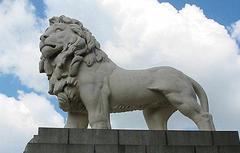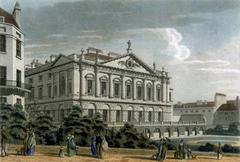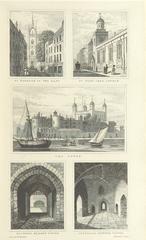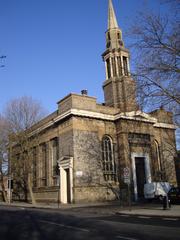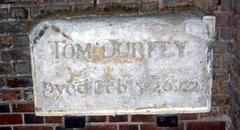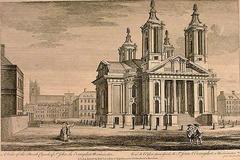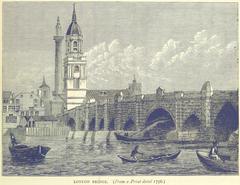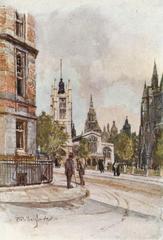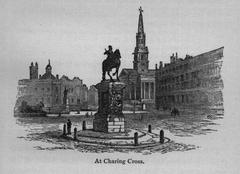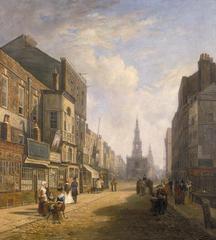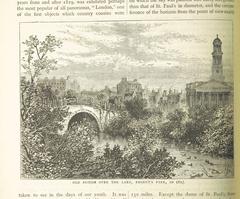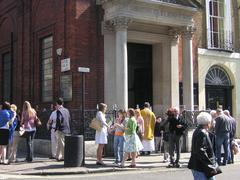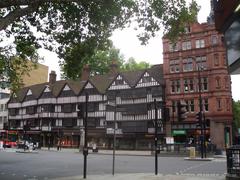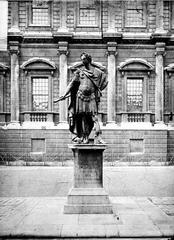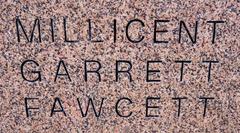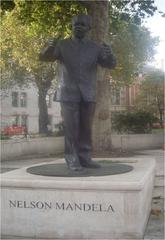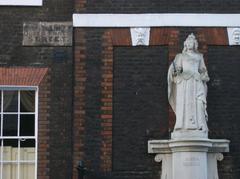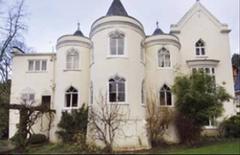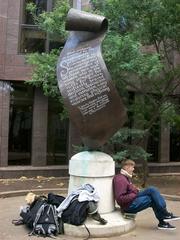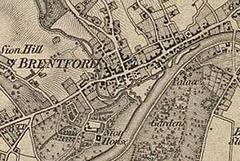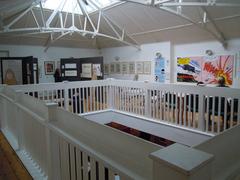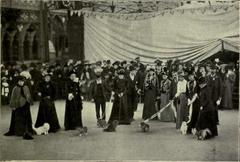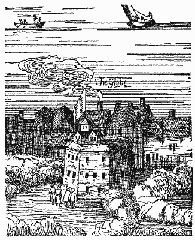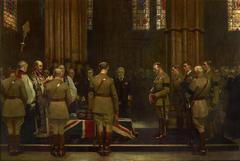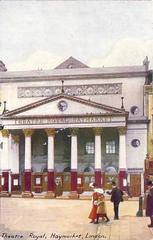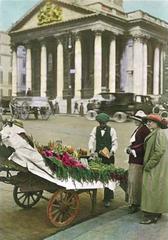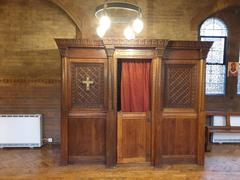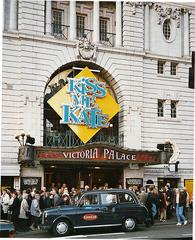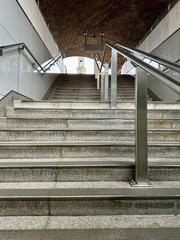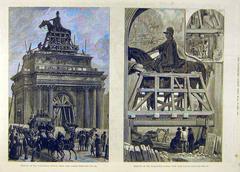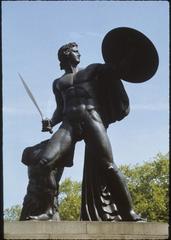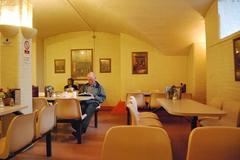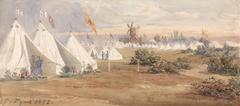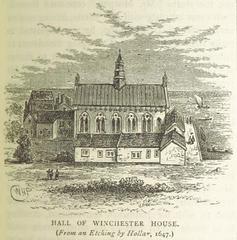Visiting Hours and Tips for the Tibetan Peace Garden in London
Date: 01/08/2024
Introduction
The Tibetan Peace Garden, located in the tranquil surroundings of Geraldine Mary Harmsworth Park in London, stands as a beacon of peace and cultural understanding. Officially opened by His Holiness the Dalai Lama on May 13, 1999, the garden is a testament to the enduring values of harmony, non-violence, and interfaith dialogue. This serene sanctuary, situated next to the Imperial War Museum, juxtaposes the history of conflict with a powerful message of peace and reconciliation. The inception of the Tibetan Peace Garden was spearheaded by the Tibet Foundation in collaboration with the Southwark Council, aiming to create a space that reflects the Dalai Lama’s teachings on peace and cultural understanding (Tibet Foundation). The garden’s design, incorporating elements of Tibetan Buddhism such as the Kalachakra Mandala and the Universal Peace Flame, offers visitors a profound experience of tranquility and reflection. This guide provides a comprehensive overview of the garden’s history, significance, and practical visitor information, ensuring you make the most of your visit to this unique cultural landmark.
Table of Contents
- Introduction
- History and Significance
- Visitor Information
- Features and Attractions
- Educational Programs and Workshops
- Accessibility and Visitor Amenities
- Nearby Attractions
- Visitor Tips
- Frequently Asked Questions (FAQ)
- Conclusion
History and Significance
Inception and Opening
The Tibetan Peace Garden was the result of efforts by the Tibet Foundation and the Southwark Council, who provided the land for this peace initiative. The garden was donated to the people of Britain to reflect the Dalai Lama’s teachings on the importance of understanding between different cultures.
The Vision of Phuntsog Wangyal
Phuntsog Wangyal, the founding director of the Tibet Foundation, envisioned a sanctuary that would serve as a reminder of the Tibetan people’s commitment to peace and non-violence. His efforts were instrumental in bringing the garden to life, ensuring it stands as a monument to the courage and resilience of the Tibetan people.
Architectural and Spiritual Elements
The garden’s design incorporates several elements rooted in Tibetan Buddhism. At its heart is the Kalachakra Mandala, a symbol associated with world peace and harmony. Surrounding the mandala are eight meditation areas for reflection and contemplation.
Additionally, the garden features four modern sculptures representing the four key elements of life: earth, water, air, and fire. These sculptures are strategically placed in the north, south, west, and east plots of the garden, enveloping the central language pillar. This pillar bears a message from the Dalai Lama, inscribed in Tibetan, English, Chinese, and Hindi, emphasizing the importance of cultural understanding and harmony.
Cultural and Educational Significance
The Tibetan Peace Garden serves as an educational resource, aiming to deepen visitors’ awareness of the Dalai Lama’s teachings and Tibetan culture. Its location next to the Imperial War Museum is symbolic, juxtaposing a place dedicated to the history of conflict with a sanctuary promoting peace and understanding.
Ongoing Preservation Efforts
In 2021, the Tibet Foundation approached the Lelung Dharma Trust to ensure the garden’s continued maintenance. The Lelung Dharma Trust, in collaboration with the Southwark Council, has since taken on the responsibility of preserving the garden. In 2022, the trust hosted a major event at the garden, highlighting its ongoing commitment to this peace initiative.
Symbolism and Messages
The garden is imbued with symbolism reflecting the core values of Tibetan Buddhism and the Dalai Lama’s teachings. The central Kalachakra Mandala represents the concept of time and cycles, emphasizing the interconnectedness of all life. The surrounding meditation areas and sculptures reinforce themes of balance and harmony.
The language pillar, with its multilingual inscription, serves as a powerful reminder of the importance of communication and understanding between cultures. The Dalai Lama’s message underscores the necessity of living in harmony and choosing non-violence to resolve conflicts.
Community and Global Impact
The Tibetan Peace Garden has become a significant cultural and spiritual landmark in London, attracting visitors from around the world. Its presence helps raise awareness about Tibetan culture and the universal values of peace and harmony. The garden also serves as a venue for events promoting peace and cultural understanding.
Visitor Information
Accessibility
The Tibetan Peace Garden is easily accessible by public transport. It is within walking distance of Waterloo Station and close to several major London landmarks, including the Houses of Parliament, Lambeth Palace, the London Eye, the South Bank Centre, and Tate Modern. The nearest underground stations are Elephant & Castle (Bakerloo/Northern Lines) and Lambeth North (Bakerloo Line). Several bus routes also pass by the garden.
Public Transport Options
The garden is conveniently located near major transport hubs, making it easy for visitors to reach by train, bus, or underground.
Parking Information
Parking facilities near the garden are limited, and visitors are advised to use public transport. The nearest NCP car park is located at Elephant & Castle Shopping Centre.
Visiting Hours
The Tibetan Peace Garden is open daily from dawn until dusk. Visitors are encouraged to check the Lelung Dharma Trust website for any changes in opening hours or special events.
Ticket Prices
There is no entrance fee to visit the Tibetan Peace Garden. It is free and open to the public.
Special Events and Guided Tours
The garden hosts various events and activities aimed at promoting peace and cultural understanding. On May 24, 2022, the Tashi Lhunpo monks held a prayer session for world peace at the garden, marking the 24th anniversary of its opening. Visitors can also participate in guided tours to learn more about the garden’s history and significance.
Features and Attractions
The Kalachakra Mandala
At the heart of the Tibetan Peace Garden lies the Kalachakra Mandala, a striking and intricate design that symbolizes the universe in Buddhist cosmology. The mandala is a central feature, designed to promote peace and harmony. It is constructed with precision and attention to detail, reflecting the traditional Tibetan art form. Visitors can walk around the mandala, taking in its beauty and the serene atmosphere it creates. The mandala serves as a focal point for meditation and reflection, encouraging visitors to contemplate the interconnectedness of all life.
The Universal Peace Flame
Another significant feature of the Tibetan Peace Garden is the Universal Peace Flame. This eternal flame symbolizes the aspiration for global peace and unity. It was lit by the Dalai Lama during the garden’s inauguration in 1999. The flame is housed in a specially designed structure that allows it to burn continuously, regardless of weather conditions. Visitors often gather around the flame to offer prayers and meditate on peace. The presence of the flame adds a profound sense of purpose and solemnity to the garden.
The Four Stupas
The garden is adorned with four stupas, each representing a different aspect of Buddhist teachings. These stupas are traditional Buddhist monuments that serve as reliquaries and symbols of enlightenment. The stupas in the Tibetan Peace Garden are intricately decorated and positioned to create a harmonious and balanced environment. Each stupa is accompanied by plaques that provide information about its significance and the teachings it represents. Visitors can walk around the stupas, offering prayers and reflecting on the teachings of Buddhism.
The Wall of Prayers
Encircling the garden is the Wall of Prayers, a series of plaques inscribed with prayers and messages of peace from people around the world. The wall serves as a testament to the universal desire for peace and the interconnectedness of humanity. Visitors are encouraged to read the prayers and add their own messages, creating a living tapestry of hope and goodwill. The Wall of Prayers is a powerful reminder of the collective aspiration for a more peaceful world.
The Meditation Pavilion
The Meditation Pavilion is a tranquil space within the garden designed for quiet reflection and meditation. The pavilion is constructed using traditional Tibetan architectural elements, creating an authentic and serene environment. Inside, visitors will find comfortable seating and a peaceful ambiance conducive to meditation. The pavilion is often used for guided meditation sessions and mindfulness workshops, providing visitors with an opportunity to deepen their practice and connect with their inner selves.
The Garden’s Flora and Fauna
The Tibetan Peace Garden is home to a diverse array of plants and wildlife, carefully selected to create a harmonious and balanced ecosystem. The garden features a variety of native and exotic plants, including many species that are significant in Tibetan culture. The flora is arranged to create a visually stunning and peaceful environment, with blooming flowers and lush greenery providing a feast for the senses. The garden also attracts a variety of birds and insects, adding to the sense of being in a natural sanctuary.
The Peace Bell
A prominent feature of the garden is the Peace Bell, a large bronze bell that visitors are invited to ring. The bell’s deep, resonant sound is believed to carry prayers for peace and harmony throughout the world. The act of ringing the bell is a symbolic gesture, allowing visitors to actively participate in the garden’s mission of promoting peace. The Peace Bell is often rung during special ceremonies and events, adding a ceremonial and communal aspect to the garden experience.
Educational Programs and Workshops
The Tibetan Peace Garden offers a range of educational programs and workshops designed to promote understanding and appreciation of Tibetan culture and Buddhist teachings. These programs include guided tours, meditation classes, and lectures on various aspects of Tibetan Buddhism. The garden also hosts special events and festivals throughout the year, celebrating important dates in the Tibetan calendar. These activities provide visitors with an opportunity to deepen their knowledge and engage with the garden’s mission in a meaningful way.
Accessibility and Visitor Amenities
The Tibetan Peace Garden is designed to be accessible to all visitors, with pathways and facilities that accommodate individuals with disabilities. The garden is open year-round, and admission is free, making it an inclusive and welcoming space for everyone. There are also amenities such as benches, restrooms, and a small café offering refreshments. The garden’s central location in London makes it easily accessible by public transport, with several bus and tube stations nearby.
Nearby Attractions
Visitors to the Tibetan Peace Garden can also explore the surrounding area, which is rich in cultural and historical attractions. The garden is located within the larger Geraldine Mary Harmsworth Park, which is home to the Imperial War Museum. This museum offers a comprehensive look at the history of warfare and its impact on society. Additionally, the nearby Southbank Centre and Tate Modern provide opportunities to experience contemporary art and cultural performances.
Visitor Tips
To make the most of a visit to the Tibetan Peace Garden, it is recommended to plan ahead and check the garden’s website for any special events or closures. Early mornings and weekdays are typically less crowded, offering a more peaceful experience. Comfortable walking shoes are advisable, as the garden’s pathways can be uneven. Visitors are also encouraged to bring a notebook or journal to record their reflections and experiences. Photography is allowed, but it is important to be respectful of other visitors and the sacred nature of the garden.
Frequently Asked Questions (FAQ)
Q: What are the visiting hours of the Tibetan Peace Garden?
A: The Tibetan Peace Garden is open daily from dawn until dusk. Check the Lelung Dharma Trust website for any updates.
Q: Is there an entrance fee for the Tibetan Peace Garden?
A: No, the garden is free to visit and open to the public.
Q: How can I get to the Tibetan Peace Garden by public transport?
A: The nearest underground stations are Elephant & Castle (Bakerloo/Northern Lines) and Lambeth North (Bakerloo Line). Several bus routes also pass by the garden.
Q: Are there any special events at the Tibetan Peace Garden?
A: Yes, the garden hosts various events promoting peace and cultural understanding. Check the Lelung Dharma Trust website for upcoming events.
Conclusion
The Tibetan Peace Garden stands as a testament to the enduring values of peace, harmony, and cultural understanding. Its rich history, deeply symbolic elements, and ongoing preservation efforts make it a significant landmark in London. Visitors can find inspiration and solace in its tranquil surroundings while gaining a deeper appreciation for the teachings of the Dalai Lama and the resilience of the Tibetan people.
Call to Action
For more information about the Tibetan Peace Garden and upcoming events, visit the Lelung Dharma Trust website. Follow us on social media for updates and related posts about other historical sites in London.
References
- Tibetan Peace Garden: Peace and Harmony in the Heart of London, 2023, Tibet Foundation https://tsamtruk.com/2023/05/13/tibetan-peace-garden-peace-and-harmony-in-the-heart-of-london/
- Peace Garden, Lelung Dharma Trust https://www.lelung.org/peace-garden
- Imperial War Museum, IWM https://www.iwm.org.uk/visits/iwm-london
- Geraldine Mary Harmsworth Park, Southwark Council https://www.southwark.gov.uk/parks-and-open-spaces/parks/geraldine-mary-harmsworth-park
- Southbank Centre, Southbank Centre https://www.southbankcentre.co.uk/
- Tate Modern, Tate https://www.tate.org.uk/visit/tate-modern
- Borough Market, Borough Market https://boroughmarket.org.uk/

